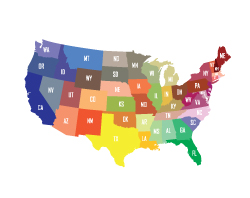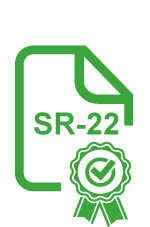Critical Facts: What Drunk Driver Arrests Mean for Communities
Drunk driver arrests represent law enforcement’s primary tool for removing impaired drivers from roads and preventing fatal accidents. These arrests occur when officers detect drivers operating vehicles with blood alcohol content (BAC) above legal limits, typically 0.08% for standard drivers and 0.04% for commercial drivers.
Recent data shows drunk driver arrests have increased significantly, with police departments reporting enhanced enforcement strategies and improved detection methods. The National Highway Traffic Safety Administration (NHTSA) reports that drunk driver arrests save approximately 10,000 lives annually through deterrent effects and immediate threat removal. Understanding the arrest process, legal implications, and prevention measures helps communities stay safer while supporting effective law enforcement efforts.
Police Protocol: How Officers Execute Drunk Driver Arrests
Law enforcement follows standardized procedures when conducting drunk driver arrests. Officers typically initiate stops based on observable driving behaviors such as swerving, erratic speed changes, or traffic violations. The arrest process involves multiple verification steps to ensure accuracy and legal compliance.
During suspected impaired driving stops, officers conduct field sobriety tests including walk-and-turn assessments, one-leg stands, and horizontal gaze nystagmus tests. These evaluations help officers determine probable cause for drunk driver arrests before administering breathalyzer tests or requesting blood samples.
Evidence Collection: Building Cases for Drunk Driver Arrests
Officers document extensive evidence during drunk driver arrests to support prosecution efforts. Body camera footage captures driver behavior, speech patterns, and coordination levels. Dashboard cameras record driving patterns leading to the initial stop.
Chemical testing provides crucial evidence in drunk driver arrests cases. The Federal Bureau of Investigation (FBI) maintains national databases tracking arrest patterns and conviction rates across jurisdictions. Breathalyzer results, blood tests, and urine samples establish BAC levels at arrest time. Officers also document physical evidence such as open containers, drug paraphernalia, or accident damage.
Legal Consequences: Penalties Following Drunk Driver Arrests
Drunk driver arrests trigger immediate and long-term legal consequences that vary by state and offense history. First-time offenders typically face license suspension, fines, mandatory alcohol education programs, and potential jail time. Repeat offenders encounter escalated penalties including extended license revocation and mandatory ignition interlock devices.
Court proceedings following drunk driver arrests often result in plea negotiations or trial proceedings. Prosecutors must prove impairment beyond reasonable doubt using evidence collected during the arrest. Defense attorneys may challenge testing procedures, equipment calibration, or officer conduct during drunk driver arrests.
Financial Impact: Costs Associated with Drunk Driver Arrests
The financial burden of drunk driver arrests extends far beyond initial fines. Offenders face court costs, attorney fees, increased insurance premiums, and potential civil liability for accidents. License reinstatement fees, ignition interlock installation, and alcohol treatment programs add substantial expenses.
Prevention Strategies: Reducing Drunk Driver Arrests Through Education
Community education programs significantly reduce drunk driver arrests by promoting responsible alcohol consumption and alternative transportation options. The Centers for Disease Control and Prevention (CDC) reports that comprehensive prevention programs can reduce drunk driving incidents by up to 30% in participating communities. Schools, businesses, and organizations implement awareness campaigns highlighting legal consequences and safety risks associated with impaired driving.
Ride-sharing services, designated driver programs, and public transportation initiatives provide alternatives that decrease drunk driver arrests. Technology solutions including smartphone apps and vehicle safety systems help prevent impaired driving incidents before they occur.
Final Verdict: Why Drunk Driver Arrests Matter for Public Safety
Drunk driver arrests serve as essential public safety measures that protect innocent lives while holding offenders accountable for dangerous behavior. Consistent enforcement combined with education and prevention efforts creates comprehensive approaches to reducing impaired driving incidents.
Next Steps: Supporting Drunk Driver Arrests Prevention Efforts
Take action in your community by supporting designated driver programs, advocating for stronger impaired driving laws, and participating in awareness campaigns. Contact local law enforcement to learn about drunk driver arrests statistics and prevention initiatives in your area. If you need legal and professional help regarding drunk driver arrests or DUI defense, visit 1800duilaws for expert guidance and representation.
For qualified attorneys seeking exclusive drunk driving defense leads, visit our website to learn more about our specialized lead generation services.
Frequently Asked Questions About Drunk Driver Arrests Annually
1. How Many Drunk Driver Arrests Occur Annually?
Police departments nationwide report approximately 1 million drunk driver arrests each year, with numbers fluctuating based on enforcement funding and seasonal patterns.
2. What Happens Immediately After Drunk Driver Arrests?
Arrested individuals typically face booking procedures, bail hearings, and license suspension. Officers transport suspects to detention facilities for processing and chemical testing.
3. Can Drunk Driver Arrests Be Challenged in Court?
Yes, defense attorneys can challenge drunk driver arrests by questioning testing accuracy, officer conduct, or procedural violations during the arrest process.
4. Do First-Time Drunk Driver Arrests Result in Jail Time?
Most first-time drunk driver arrests result in probation, fines, and license suspension rather than extended jail sentences, though laws vary by state.
5. How Do Drunk Driver Arrests Prevent Future Incidents?
Drunk driver arrests create deterrent effects through public awareness while removing immediate threats from roadways and mandating treatment programs for offenders.
Key Takeaways
- Enforcement Priority: Police departments prioritize drunk driver arrests through specialized training and enhanced patrol strategies
- Legal Consequences: Drunk driver arrests trigger immediate license suspension and long-term legal penalties
- Evidence Standards: Officers collect comprehensive evidence during drunk driver arrests to support successful prosecutions
- Prevention Focus: Community education and alternative transportation reduce drunk driver arrests through proactive measures
- Public Safety: Consistent drunk driver arrests enforcement protects lives while promoting responsible behavior








